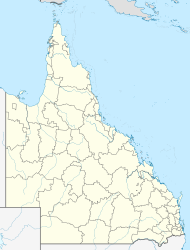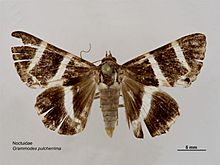Amstrad CP/M Plus 문자 집합
Amstrad CP/M Plus character set그 암스 트래드 CP/M 플러스 캐릭터(로 PCW 문자나 ZX스펙트럼+3 문자 집합을 세웠다 대신으로 알려진)은 규정하고 8비트 문자 집합을 그룹 Amstrad/Locomotive 소프트웨어에 의해 디지털 리서치의 CP/M Plus[1]의 다양한 암스 트래드 CPC/슈나이더 CPC과 암스 트래드 PCW/슈나이더 조이스 엄마에 적응과 함께 사용하기 위해 도입된다.치nes.[2][3] 문자 집합은 Amstrad ZX Spectrum +3 버전의 cp/[1]m에서도 사용되었습니다.
적어도 ZX Spectrum +3에서는 시스템의 선택된 로케일에 따라 8개의 언어 고유의 변형(ISO/IEC 646에 기반)으로 존재하며 언어 0이 "US"[4]의 기본값입니다.
LocoScript에서는 [5][6]문자 집합의 또 다른 약간 변형된 문자가 사용되었습니다.
문자 집합
| Amstrad CP/M Plus 문자 집합(언어 0)[1][3] | ||||||||||||||||
| 0 | 1 | 2 | 3 | 4 | 5 | 6 | 7 | 8 | 9 | A | B | C | D | E | F | |
| 0x | ∞ | ⊙ | Γ | Δ | ⊗ | × | ÷ | ∴ | Π | ↓ | Σ | ← | → | ± | ↔ | Ω |
| 1배 | α | β | γ | δ | ε | θ | λ | μ | π | ρ | σ | τ | φ | χ | ψ | ω |
| 2배 | SP | ! | " | # | $ | % | & | ' | ( | ) | * | + | , | - | . | / |
| 3배 | 0︀[a] | 1 | 2 | 3 | 4 | 5 | 6 | 7 | 8 | 9 | : | ; | < > | = | > | ? |
| 4배 | @ | A | B | C | D | E | F | G | H | I | J | K | L | M | N | O |
| 5배 | P | Q | R | S | T | U | V | W | X | Y | Z | [ | \ | ] | ↑ | _ |
| 6배 | ` | a | b | c | d | e | f | g | h | i | j | k | l | m | n | o |
| 7배 | p | q | r | s | t | u | v | w | x | y | z | { | } | ~ | 0[a] | |
| 8배 | ◾︎ | ╧ | ╟ | ╚ | ╤ | ║ | ╔ | ╠ | ╢ | ╝ | ═ | ╩ | ╗ | ╣ | ╦ | ╬ |
| 9배 | · | ╵ | ╶ | └ | ╷ | │ | ┌ | ├ | ╴ | ┘ | ─ | ┴ | ┐ | ┤ | ┬ | ┼ |
| 도끼 | ª | º | ° | £ | © | § | † | ¼ | ½ | ¾ | « | » | ₧ | ¿ | ¡ | |
| Bx | ƒ | ¢ | ¨ | ´ | ˆ | ‰ | ⅛ | ⅜ | ⅝ | ⅞ | ß | ○ | • | ¥ | ® | ™ |
| Cx | 아아 | 에 | Ⅱ | ó | u | 」 | ê | Î | o | Û | à | è | ì | Ò | Ù | Ÿ |
| Dx | ä | ë | Ï | 외 | ü | 츠 | ᄋ | å | ø | ñ | ã | Õ | ≥ | ≤ | ≠ | ≃ |
| 예 | 아 | 에 | ii | o | u | ★ | ê | î | o | û | 아 | è | ì | ò | ù | ÿ |
| Fx | ä | ë | ï | ö | ü | 츠 | æ | å | ø | ñ | ã | õ | ⇒ | ⇐ | ⇔ | ≡ |
언어의 변종
언어의 변종
언어 1 ~ 7 에서는, 0 의 특정의 문자입니다.127은 128 범위의 문자와 스왑됩니다.문자 세트의 255(다음 [4]표 참조)
| 언어 | 0x23 | 0x40 | 0x5B | 0x5C | 0x5D | 0x5E | 0x60 | 0x7B | 0x7C | 0x7D | 0x7E |
|---|---|---|---|---|---|---|---|---|---|---|---|
| 0: 미국 | # | @ | [ | \ | ] | ^ | ` | { | } | ~ | |
| 1: 프랑스 | # | 아 | º | 츠 | § | ^ | ` | 에 | ù | è | ¨ |
| 2: 독일 | # | § | ä | 외 | ü | ^ | ` | ä | ö | ü | ß |
| 3: 영국 | £ | @ | [ | \ | ] | ^ | ` | { | } | ~ | |
| 4: 덴마크 | # | @ | ᄋ | ø | å | ^ | ` | æ | ø | å | ~ |
| 5: 스웨덴 | # | 에 | ä | 외 | å | ü | 에 | ä | ö | å | ü |
| 6: 이탈리아 | # | @ | º | \ | 에 | ^ | ù | 아 | ò | è | ì |
| 7: 스페인 | Pt | @ | ¡ | ñ | ¿ | ^ | ` | ¨ | ñ | } | ~ |
「 」를 참조해 주세요.
- Amstrad CPC 문자 집합
- ZX 스펙트럼 문자 세트
- ISO/IEC 646 (유사하지만 동일하지 않은7비트 문자 세트)
- 상자 그리기 문자
레퍼런스
- ^ a b c "Appendix II: CP/M Plus character sets / II.1 The complete character set (Language 0)". Spectrum +3 CP/M Plus manual (User Manual). Archived from the original on 2009-10-15. Retrieved 2017-07-10. [1]
- ^ Elliott, John C. (2015-04-04). "Amstrad Extended BIOS Internals". Seasip.info. Archived from the original on 2017-07-15. Retrieved 2017-07-15.
- ^ a b "Amstrad CP/M Plus character set". Archived from the original on 2017-07-15. Retrieved 2017-07-15.
- ^ a b "Chapter 4.5 Selecting the appropriate national language". Spectrum +3 CP/M Plus manual (User Manual). Archived from the original on 2009-10-15. Retrieved 2017-07-10.
[...] The selection of characters made available on computers sold in different countries are subject to national variations. As a result, CP/M has different national language versions of the screen characters. [...] Immediately after [...] load [...] it is set up to use the US character set [...] The codes CP/M uses are [...] in the range 0...255 [...] A handful of these codes represent different characters, depending on which national language is selected. [...] All the different national language versions of CP/M are supported on the Spectrum +3 and a special utility has been incorporated into the CP/M system to allow the user to swap from one national language to another. This is the LANGUAGE utility. [...] The 'standard' set of codes and characters represented by these codes is the US character set. What happens in the other language versions is that certain codes in the first half of the character set (0...127) are associated with characters that are in the second half of the US character set and vice versa. In fact a straight swap is made between the code used for the special language character, and the character it substitutes. For example, in the US character set, the code for £ is #A3: when English is selected, £ replaces # as the character with code #23 - and # replaces £ as the character with code #A3. [...]
[2] - ^ Elliott, John C. (2016-04-16). "LocoScript 1 file format". Seasip.info. Archived from the original on 2017-07-15. Retrieved 2017-07-15.
[...] In the text, characters 0x00-0x7F and 0xA0-0xFF are printable, using the PCW character set. This is the same character set used by CP/M on the Spectrum +3. Characters 0x80-0x9F are markup codes: [...]
- ^ "LogoScript". Archived from the original on 2017-03-17. Retrieved 2017-07-15.
[...] At least in the PCW versions, the Amstrad CP/M Plus character set was used for the text portions, except that the C1 controls range was used for control codes (different ones from the C1 control standard, which probably didn't exist yet) instead of the graphical characters of the CPM/PLUS set. [...]


